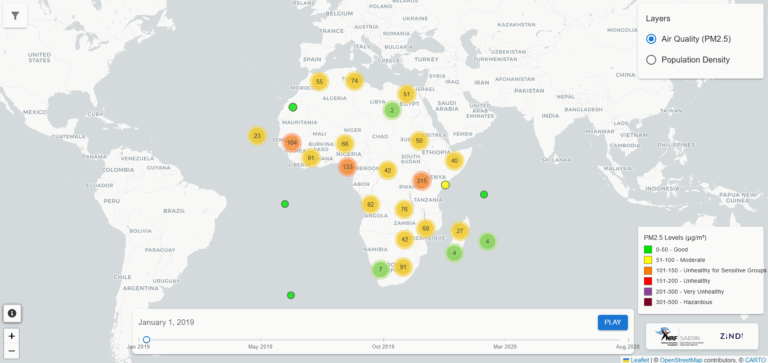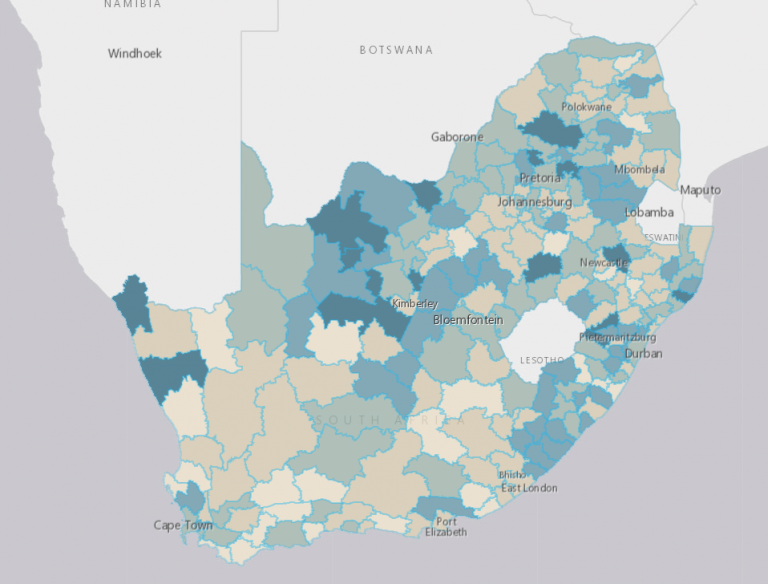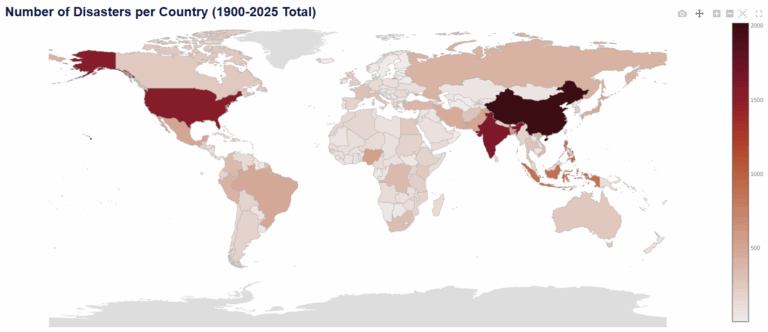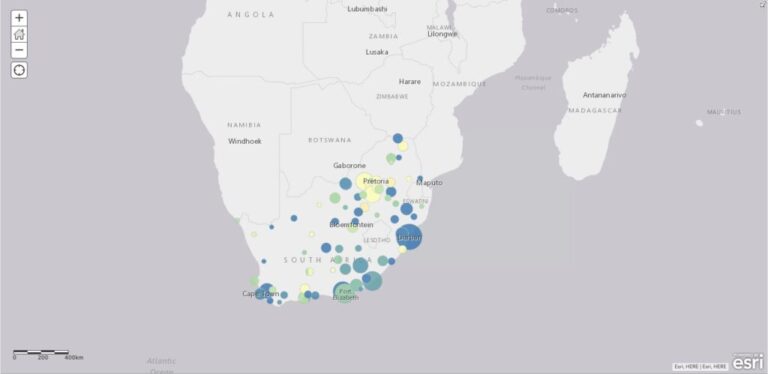GIS applications
Risk and Vulnerability Atlas
SARVA is home to a growing number of themed based atlases that investigate the spatial characteristics of risks and exposure.
SARVA is home to a growing number of themed based atlases that investigate the spatial characteristics of risks and exposure.

The 2017 Agriculture Census is a country-wide census of commercial agriculture, which provides financial performance data of all farmers registered for value-added tax (VAT) and the production performance of all farmers who responded to the census. The census includes variables such as, inter alia, the type of farm ownership, agricultural income and expenditure, production land, agricultural products (i.e. crops and animals), agricultural losses, employees’ remuneration, and some demographic information about farm operators.

This dataset contains daily estimates (2019-2020) of PM2.5 in 1 466 cities across Africa.

The BioEnergy Atlas is an initiative funded by the Department of Science and Innovation and implimented by the South African Environmental Observation Network (SAEON). This interactive dashboard presents the finding of the feasibility analyses from BEA 1.0 with the aim of providing regional contextual information about which BioEnergy Options are feasible within the each region.

The SARVA Climate Risk Tool is a local decision support tool that houses spatial information on historical climate data, projections, and impacts. The tool utilises data from expert sources such as SAEON, DEFF, CSIR, Centre for Research on the Epidemiology as well as the Climate Research Unit of the University of East Anglia.

Collection of datasets compiled by NRF-SAEON mapping the vulnerability of the South Africa to the Covid-19 Pandemic. The datasets included in this application were compiled from a variety of different sources, including Statssa, the CSIR Greenbook as well as the Health System Trust.

An environmental risk and vulnerability profiler based on the 2018 National Biodiversity Assessment (NBA) data which was conducted by the South African National Biodiversity Institute (SANBI).

The Emergency Events Database (EM-DAT) data, provided by the Centre for Research on the Epidemiology of Disasters (CRED), was used to generate the map layers included in the atlas (https://www.emdat.be). The atlas can be filtered to South Africa, displaying the number of geophysical, meteorological, hydrological, and climatological natural disaster events across the country from 1952.

The South African National Climate Change Information System (NCCIS) contains climate related data and information from a range of sources for the purposes of providing insights into the country’s progress in responding to climate change and achieving national and international goals, commitments and targets.

Decision-ready data in support of health SDGs for South Africa. The data provided is at Local Municipality scale and includes data on HIV, TB, non-communicable diseases, smoking, and health care workers.

Designed utilising JavaScript/HTML, this dataset contains daily estimates (2019-2020) of PM2.5 in 71 cities across South Africa.